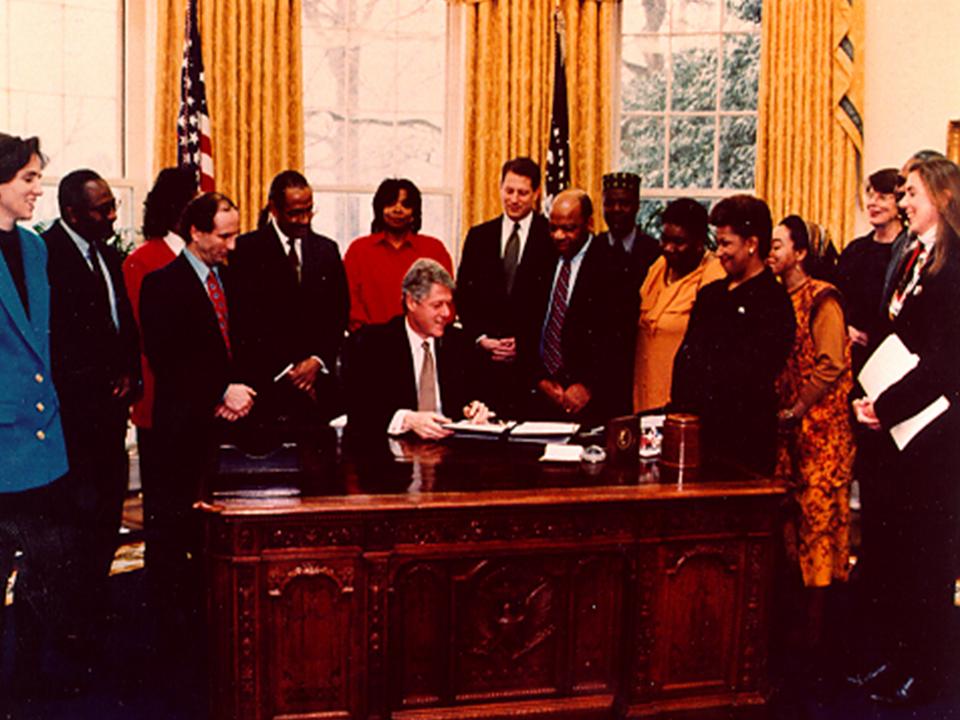NRDC Switchboard, Feb. 10, 2014
by Al Huang
February 11, 2014 marks the 20th anniversary of President Bill Clinton’s signing of the historic Executive Order 12898 on Environmental Justice "Federal Actions to Address Environmental Justice in Minority Populations and Low-Income Populations."

The landmark Order was the first major federal action on environmental justice (EJ) in the United States and stated that all federal agencies "shall make achieving environmental justice part of its mission by identifying and addressing, as appropriate, disproportionately high and adverse human health or environmental effects of its programs, policies, and activities on minority populations and low-income populations." Many states followed the Order’s lead by adopting similar policy statements through executive power or legislation that gave legitimacy to the EJ movement and its underlying principle that low-income communities and communities of color bear a disproportionate burden of environmental pollution and its health effects.
Twenty years later, the Order’s legacy remains, despite several attempts to redefine its purpose away from addressing disproportional environmental impacts to people of color and low-income communities.
For example, in 2005 the Environmental Protection Agency (EPA) under Administrator Stephen Johnson attempted to redefine the purpose of the Order by dropping race as a factor in identifying and prioritizing populations that may be disadvantaged by a federal agency’s policies, asserting that all communities should be treated equally regardless of their race or socioeconomic status. This approach, which essentially scrubbed racial discrimination from the definition of EJ, led to the issuance of two scathing reports (one in 2004 and one in 2006) by EPA’s own Office of Inspector General concluding that EPA had failed to properly implement the intent of the Executive Order.
The Order was resuscitated in 2008 when President Barack Obama appointed Lisa Jackson as Administrator of EPA. Administrator Jackson quickly named EJ as one of her top priorities for EPA and re-established an EJ ethos in the agency. The result was unprecedented attention to and awareness of EJ issues at EPA. One of EPA’s achievements during this time was a substantial increase in EJ grant funding for community-based organizations by EPA from $5 million in 2009 to $7 million in 2013.
That said, although the Order put EJ on the map for the federal government and the Obama Administration has signified a committment to EJ, unfortunately twenty years later we still have communities all across the country that are still unnecessarily exposed to toxic pollution that threatens their health and quality of life. Many of these communities also lack basic environmental benefits too like a healthy home free of toxins, access to open spaces like parks, the availability of healthy foods, and safe and affordable public transportation.
So on this anniversary, we recognize that the collective struggle for EJ continues and the voices of low-income communities and communities of color around the country calling for justice grows louder and stronger. The Order was a key first step for the EJ movement in the US, but there still is a long road to achieving justice for low-income communities and communities of color facing environmental challenges in the US today.
Below is a fantastic blog post by Dr. Robert Bullard, one of the EJ movement’s first leaders, on the 20th anniversary of the Order and some of the EJ challenges that still remain today.
The full article can be found on Dr. Bullard’s site here.


Environmental Justice Advocates Testify in Trenton on the Proposed Clean Energy Standard